Flu germs spread easily
Coming in contact with the flu is pretty easy, unfortunately. The virus spreads when droplets from an infected person who sneezes, coughs, or talks land on the mouth or nose of a person (ick), reports the Centers for Disease Control and Prevention (CDC). And you don’t have to be standing particularly close, as these droplets can travel up to six feet away. It’s also possible to get the flu if you touch an infected surface that has the flu virus on it and then go on to touch your mouth, nose, or eyes. In this scenario, you may not even be aware you’re near someone sick as it can take up to two days to start feeling symptomatic.

The flu can be deadly
While no one wants to feel sick, the flu can be deadly for some, including young children under the age of 5, adults older than 65, pregnant women, those who have a chronic illness, and anyone with a weakened immune system. It’s important to see your doctor immediately if you’re more prone to flu-related health complications and come down with flu symptoms like a fever, aches, chills, or fatigue. Here are six signs of the flu you definitely should not ignore.

Get the flu shot
The biggest step you can take in flu-proofing your home is to make sure everyone in it gets the flu shot. (This is also crucial if you’re living with someone who may be at a higher risk for those flu-related complications.) The CDC recommends that anyone six months or older get the flu shot annually, with rare exceptions.

Wash your hands when you get home
“The number-one way to flu-proof your home is to stop it from entering in the first place,” says Anthony Nguyen, DO, a family medicine physician with Providence Medical Group, part of Ascension in Mobile, Alabama. “Once we touch an object that has the virus, we then become a carrier, and can then spread it further. Proper hand-washing destroys the virus, stopping the spread and simply washing your hands in warm water with soap for 20 seconds has shown to be long enough to kill the virus.” Find out seven other things that can happen if you don’t wash your hands.

Take care of your tech
“Viruses tend to live longer on hard objects,” says Dr. Nguyen. “With our frequent use of technology items like the TV remote, smartphones, and tablets (especially if you share those items with other family members) are major [germ] culprits.” Clean devices at least once a week with sanitizing wipes to help kill any flu germs that may be hanging around.

Keep sick family members in another room
Should someone in your house come down with the flu or starts showing flu-like symptoms it’s best to keep them in another room away from others. “Keep them isolated until 24 hours after their last fever,” says Dr. Nguyen. “If this is not possible, encourage them to wear a mask. If you’re caring for them wash your hands frequently, sanitize common objects, wear a mask, and avoid touching your face.” Learn how to tell the difference between the flu and a cold.
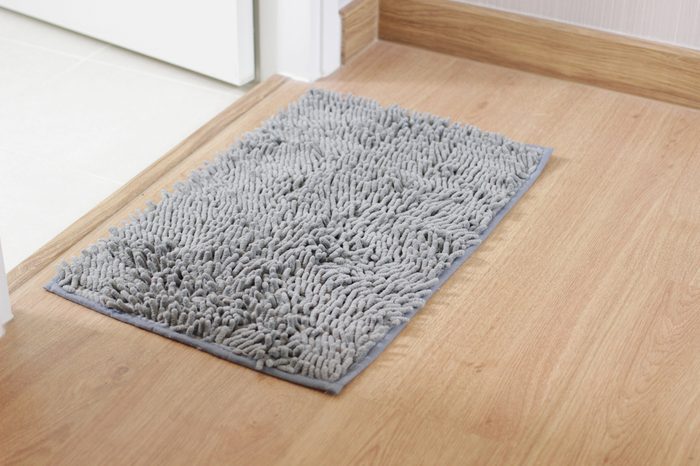
Use a doormat
“Flu virus and bacteria like to hang out in dirt and debris, and these are usually on the bottom of your shoes,” says Mike Sevilla, MD, a family medicine physician based in Salem, Ohio. Keeping a doormat outside every entrance of your home can help stop the flu virus in its tracks—literally.
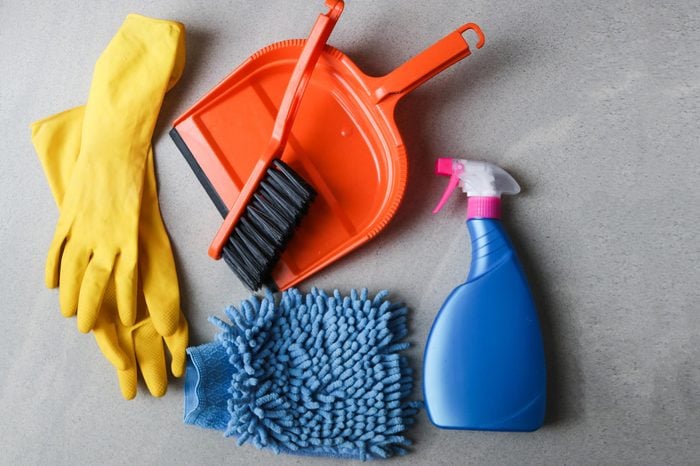
Sanitize your cleaning supplies
Make sure you take time to clean what you’re cleaning with so that you don’t spread germs unintentionally, especially if you’re cleaning an area of the house where someone who was sick spent a lot of time. “After mopping floors in a contaminated room, disinfect the mop head by soaking it for about 15 minutes in a half cup of bleach mixed into a gallon of water,” says Dr. Sevilla. And if you’re using a sponge in an infected area, your best bet is tossing it and getting a new one.
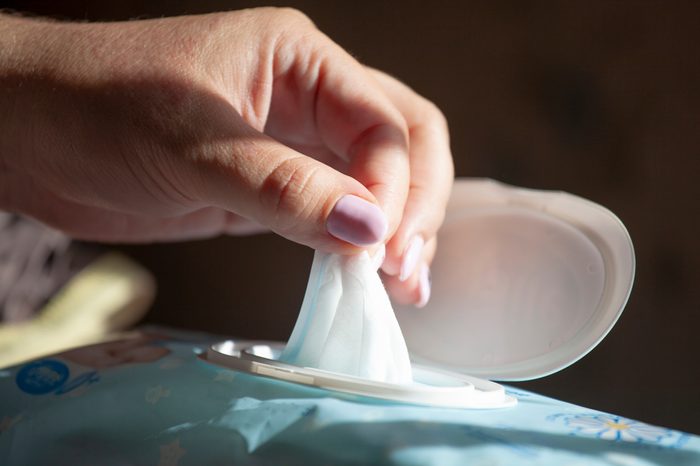
Use wipes when you can
Regularly replace sponges and rags, warns Sofia R. Fernandez, MD, medical director of GSK Consumer Health Respiratory. “Moisture levels in sponges may help viruses survive longer.” While it’s not practical (or safe) to clean your dishes with an antibacterial wipe, you may want to opt for them when wiping down other surfaces in the kitchen like countertops, sinks, and appliances.

Keep a humidifier in your house
There’s a host of problems with dry air during flu season such as causing a scratchy throat, congestion, and even nosebleeds, according to Neena Xavier, MD, assistant professor with the University of Alabama at Birmingham Department of Clinical and Diagnostic Sciences. “It’s thought that flu germs may be able to survive in the drier air conditions and if you keep the humidity level up in a room the virus may be less likely to survive.” Just make sure you’re cleaning your humidifier properly to prevent bacteria and mold growth, which can cause illness on its own.
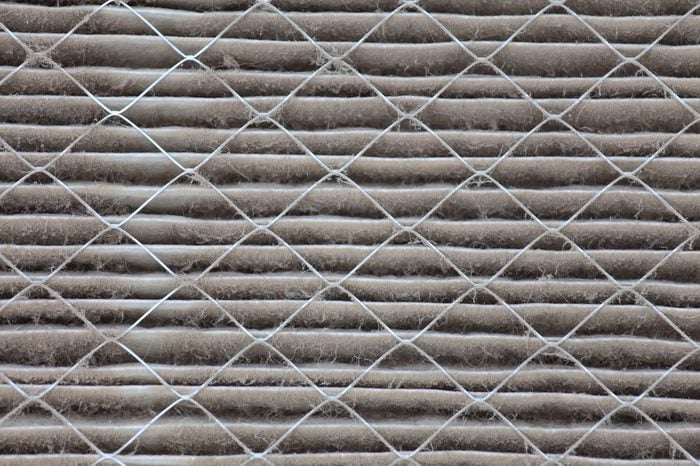
Get an air filter for rooms you spend a lot of time in
“Air filters can help trap viruses that are attached to larger particles in the air,” says Rob Darzynkiewicz, MD, chief medical officer of Hazel Health. “How much impact they have is still not certain, but they may decrease your chances of getting the flu.” Past research from the Massachusetts Institute of Technology found that high-efficiency particulate air (HEPA) filters can remove nearly 98 percent of virus particles.
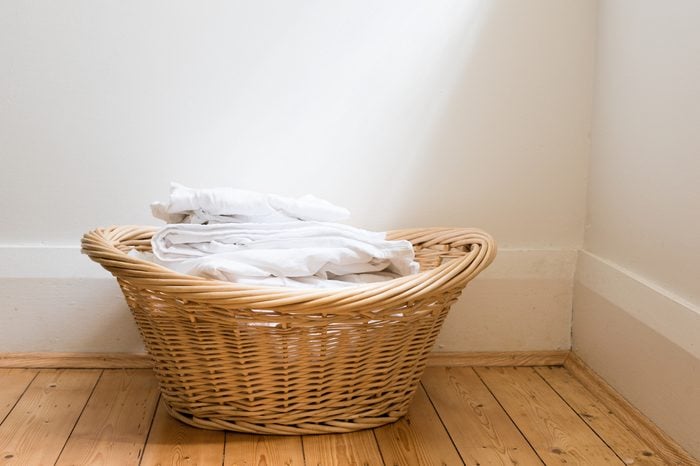
Wash sheets and towels once a week
And more if you have sick family members under your roof. “Bacteria thrive on bedding, and can easily spread from person to person,” says Nancie Fitch, DO, area medical director of MedExpress Urgent Care. At a bare minimum wash your pillowcases once a week, as it has the most contact with your face making it more likely to transport any flu germs to your eyes, nose, or mouth. Find out what the 14 most germ-ridden spots in your bedroom are.
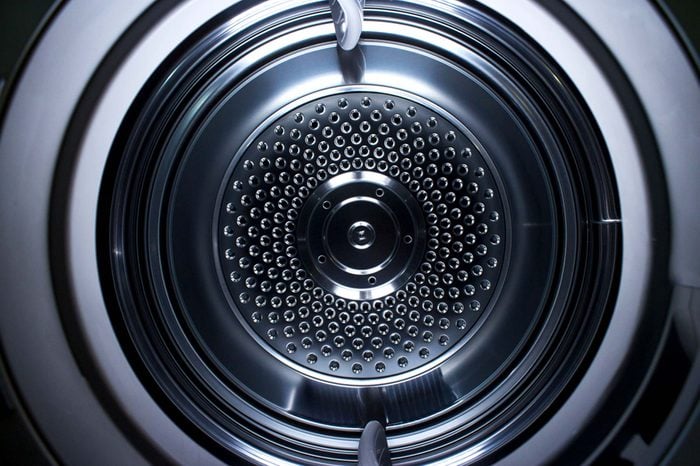
Make sure you dry items with high heat
“It’s important to use high heat when drying because that’s what actually kills germs, versus the hot water when washing,” says Dr. Darzynkiewicz. And PS: It’s fine to wash sheets, towels, and clothes of someone who was sick with the rest of your household’s items, just make sure to wash your hands after handling them and closing the lid.

Tackle the toy room
A study published in Clinical Infectious Diseases found that on average 8 percent of the U.S. population gets sick from the flu each year, with children under 18 years old being the most vulnerable. For this reason spend extra time sanitizing any toys you have. “Take non-electric plastic and metal toys, sippy cups, teething rings, and bottle nipples and soak them for two minutes in a solution of two teaspoons of bleach per gallon of water,” says Dr. Sevilla. “Rinse them in warm water and dry.”

Shop smart
As you assemble your arsenal of cleaning products, make sure you’re buying stuff that will actually kill flu germs. “When you’re buying disinfectants, look for products that have the words ‘disinfect’ or ‘sanitize’ on the label,” says Dr. Darzynkiewicz. “This means that the U.S. Environmental Protection Agency (EPA) has tested them for killing germs.” Here are 20 things the flu virus doesn’t want you to know.

